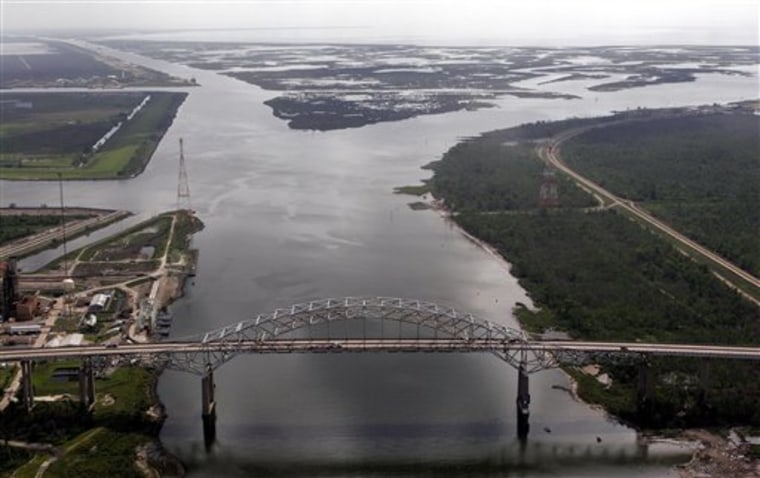A "hurricane highway" blamed for flooding southeast Louisiana during Hurricane Katrina will likely become the subject of an intense debate in the coming months as commerce is pitted against the environment and public safety.
Under a spending bill President Bush is expected to sign soon, the U.S. Army Corps of Engineers will be given more than $3 million to study whether the Mississippi River-Gulf Outlet should be closed to ships.
The outlet, commonly known as the Mr. Go or MRGO, was built in the 1960s as a shortcut between the heavily industrialized eastern portions of New Orleans and the Gulf of Mexico. At 76 miles, the channel is longer than the Panama Canal.
But since construction, the channel has turned into a monster, scientists say, by eating at the freshwater marsh and swamp forests that once thrived southeast of New Orleans. As the channel widened, it became a conduit for storm surge and acquired the nickname "hurricane highway."
"As long as it is there, New Orleans is not sustainable," said Carlton Dufrechou of the Lake Pontchartrain Basin Foundation.
St. Bernard's Enemy #1
The channel has become the culprit for residents and politicians of St. Bernard Parish, which was wiped out by Katrina. Only four structures in the parish did not sustain damage, officials say.
"MRGO has caused us more devastation than we care to think about," said Larry Ingargiola, the parish's emergency preparedness director. Closing it, he said, has been "the No. 1 project on our agenda every year."
But the Corps remains reluctant to say the Mr. Go is a storm surge conduit.
Jim Ward, deputy director of a Corps task force rebuilding the region's flood defenses, called that notion "a popular myth."
He said studies have shown the channel does not increase storm surge.
The report to Congress — due in December — could go in many directions, and it could even recommend continuing to allow deep-draft vessels to run up and down the channel.
Shipping and commercial interests are likely to throw up the biggest road blocks to closing Mr. Go, which is the only lane to the sea for many businesses in New Orleans East.
"There are some businesses back there that can't, unfortunately, relocate to the (Mississippi) river," said Sean Duffy of the Steamship Association of Louisiana. If the channel is closed to ship traffic, he said, some businesses would move out of the state.
"We have members who would hate to see it close," he said.
Dueling needs
Adam Sharp, a spokesman for U.S. Sen. Mary Landrieu, D-La., acknowledged the dueling interests: Business vs. public safety.
"There is an urgent need to move forward with a closure plan, but there's also an urgent need to keep the gateway to American commerce functioning," the spokesman said.
Aaron Viles, campaign director for the Gulf Restoration Network, a New Orleans-based environmental group, said officials are being forced into action because of a confluence of factors — a heap of bad press, Katrina's devastation and a growing awareness of Louisiana's wetlands losses.
But, he said, "the real question mark is what will that (Corps) plan look like."
For his part, Ingargiola remained skeptical. "Until I see it (closed), I don't believe it."
